|
Working with a Firewall and Virus
Software
Using the browser with a firewall and Virus
software enabled.
The program displays the "cookies required to proceed..." message.
To receive the best Faulkner experience possible, please enable
cookie acceptance on your Web browser. Registered user features -
including search capabilities and account benefits - cannot be
enjoyed while your cookies are disabled.
What is a cookie?
A cookie is a unique identifier sent to your comuter by a Web
server and stored on your computer's hard drive. This authenticated
tag lets a server identify you. Cookies allow us to recognize
previous visitors to our site; record a visitor's progress on our
site (including which pages are visited and hw much time is spent on
each page); track the page visited before coming to Faulkner; track
the page linked to when leaving Faulkner; maintain search and booking
histories; and recall certain information that a visitor previously
entered. A cookie is what alows many sites to greet you upon every
return with a message such as, "Hi, Bill! Welcome back."
Why does Faulkner use cookies?
At Faulkner, we use cookies to improve your shopping experience
and reduce the time it takes for you to complete a booking. Our
cokies do not include any personal information, but they do help us
track which of our Web pages are visited and what services are most
often used. Please note that in order to use our site, your cookies
must be turned on. However, be assured that Faulkner does not and
cannot use cookies to retrieve personal information about you from
your computer that you did not knowingly and voluntarily provide to
us.
If you have any questions regarding Faulkner's data collection,
please review our Privacy Policy.
These messages are due to a firewall or virus software preventing
the saving of temporary data to the local hard drive. All browsers
have similar settings. It's quick and
easy to turn on the cookies feature.
How do users turn on cookies?
You can usually find your cookies settings in one of your Web
browser's drop-down menus. Making the adjustment to your settings is
simple.
Windows
|
Step 1: Windows Internet Expolrer: Select
"Internet Options" from the tool menu.
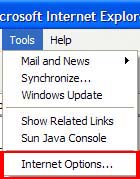
|
|
Step 2: Windows Internet Explorer: Choose the
"Privacy" tab.
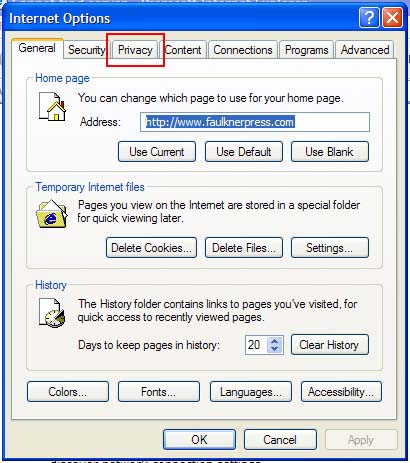
|
|
Step 3: Windows Internet Explorer: Make your
selection in the middle of the dialog box provided.
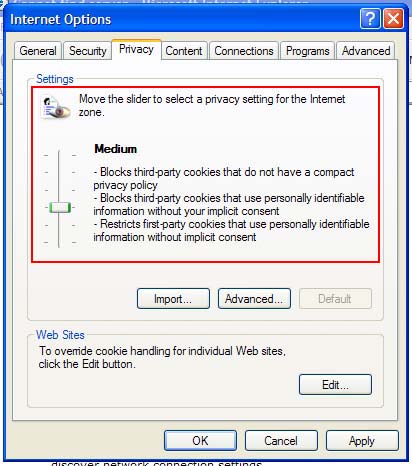
|
Macintosh
|
Macintosh Safari: Select "Preferences" from the Safari
Menu
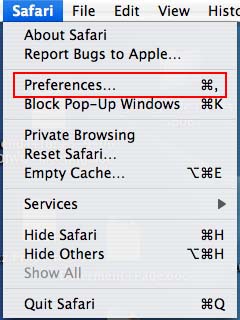
|
|
Macintosh Safari: Choose "Security" at the top of the
window. Make your selection in the middle of the dialog box
provided.
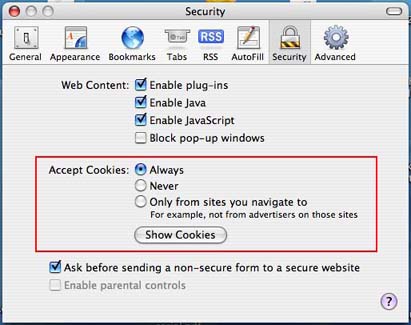
|
Internet Explorer Version 6
1. From the "Tools" menu, select "Internet Options."
2. Click on the "Privacy" tab.
3. Move the Privacy Settings slider to the bottom to select
"Accept All Cookies."
4. Click on the "OK button.
Internet Explorer Version 5
1. From the "Tools" menu, select "Internet Options."
2. Click on the "Security" tab.
3. If the security level is set to "Custom," you can change it to
another setting (we recommend "Medium") or click the Custom Level"
button. Then, under "Cookies," click on "Enable" for both options.
4. Click on the "OK" button.
Mozilla Firefox Version 1
1. From the "Tools" menu, select "Options."
2. Click the "Privacy" button on the left.
3. Under "Privacy, click on "Cookies."
4. Under "Cookies," check "Allow sites to set cookies."
Netscape Version 7
1. From the "Edit" menu, select "Preferences."
2. Click on the plus (+) to the left of "Privacy & Security."
3. Under "Privacy and Security," chose "Cookies."
4. Under "Cookies," select "Enable all cookies."
Netscape Version 6
1. From the "Edit" menu, select "Preferences."
2. Click on the plus (+) to the left of "Advanced."
3. Under "Privacy and Security," choose "Cookies."
4. Under Cookies," select "Enable all cookies."
IBM-compatible Systems Using AOL
Depending on which software you're using, this may be a two-step
process:
Part 1
1. Click on "MY AOL."
2. Click on "Preferences."
3. Click WWW.
Part 2
Once you are viewig the WWW box, you will have to try each of the
following methods. Either one or the other should address your needs.
Version A
4. Click on the "Security" tab.
5. If the security level is set to "Custom," you can change it to
another setting (we recommend"Medium") or click the "Custom Level"
button. Then, under "Cookies," click on "Enable" for both options.
Version B
4. Click on the "Advanced" tab.
5. Under "Security," find the "Cookies" section and select "Always
Accept Cookies."
6. Click on the "OK" buton.
Macintosh/Power PC Systems Using Safari
1. From the "Safari" menu on the AOL toolbar, select
"Preferences."
2. Select the "Security" icon.
3. Next to "Accept Cookies," select "Always."
Macintosh/Power PC Systems Using Mozila Firefox
1. From the "Firefox" menu, select "Preferences."
2. Click the "Privacy" icon on the left.
3. Next to "Privacy," click on "Cookies."
4. Under "Cookies," check "Enable Cookies."
Macintosh/Power PC Systems Using AOL
1. From the "My AOL" menu on the AOL toolbar, select
"Preferences."
2. Select the "WWW" icon.
3. Click on "Advanced Settings."
4. Under "Receiving Files," choose "Cookies."
5. For "When Receiving Cookies," select "Never Ask."
Macintosh/Power PC Systems Using Netscape
1. From the "Edit" menu, select "Preferences."
2. Click the "Advanced" category.
3. Under "Cookies," check "Accept All Cookies."
|